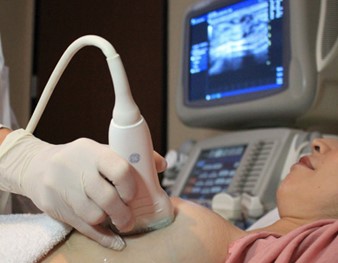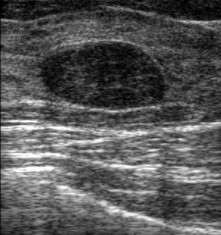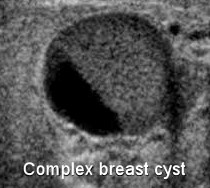Breast Ultrasound
Breast ultrasound is another common imaging technique used to screen breast for tumors and other abnormalities.
Ultrasound uses high-frequency sound waves to produce detailed images of the breasts.
They do NOT use radiation and are SAFE for pregnant women and breast-feeding mothers.
Breast ultrasound is not a screening tool to detect breast cancer but rather it is used as an adjunct to breast mammography.
Breast ultrasound uses a hand-held probe that is moved around the breast by the radiographer to identify the abnormality, hence the reporting is dependent on the experience of the ultrasonographer.

Advantages of the Breast Ultrasound
- Can differentiate fluid from solid mass
- Breast tissue can be better seen in a mammographic dense breasts
- Can delineate the shape and margins of the breast mass
- Can obtain fluid or tissue sample from the breast mass via ultrasound guided biopsy
- Can be perform more regularly, if necessary
- Can evaluate the cause of general breast symptoms like swelling and pain
Limitations of Breast Ultrasound
- Cannot identify early microcalcifications which could be early breast cancer ie DCIS which are better seen on MMG
Breast Ultrasound images showing difference between benign and cancerous lump


Benign breast lump – with oval and well defined margins (smooth surface like the grape)


Cancerous breast lump – showing irregular and ill-defined margins (sharp and irregular surface like a durian)
Overall, as both MMG and breast US has its individual advantages, combined together it will benefit women above 40 with mammographic-dense breast.
Breast Ultrasound Images showing between cystic (fluid-filled) and solid mass

Breast Cyst – more “black” appearance to suggest it’s fluid-filled

Breast solid mass – more “grey” appearance to suggest solid content

Breast Complex cyst –showing a mixed solid and cystic (fluid-filled) content

Breast solid with irregular margins – to suggest suspicious breast mass
Breast cancer Screening Tools : Mammogram or Ultrasound?
Breast cancer incidence is increasing in Malaysia and worldwide.
To detect early breast cancer, women above 40 years of age are encouraged to go for a breast screening annually or biennially.
Mammogram and ultrasound are the most common and cost-effective imaging tools used to detect breast cancer.
Mammogram is the gold standard primary screening tool for asymptomatic women which has been established since 1960s while breast ultrasound is an adjunct supplementary investigative tool used together with mammogram to detect breast cancer.
Breast ultrasound and mammography are 2 different imaging modalities with different functions and benefits.
Hence, breast ultrasound alone does not replace a mammogram or vice versa.
Radiation dose of mammography is very small and the benefit of early breast cancer detection outweighs the small amount of radiation
Benefit of Mammogram
MMG can detect small tiny dots of microcalcification seen in very early breast cancer which are not clinically palpable nor detected on breast ultrasound.

Benefit of Supplementary Breast Ultrasound Test
In some women, dense breasts obscure the detection of early breast masses and these masses do not present as calcifications.
Breast Ultrasound can
- detect lumps or breast mass as small as 5mm diameter
- determines if the lump is fluid filled (cyst) or solid
- accurately distinguish between a benign lump and a cancerous lump
- evaluate the cause of general breast symptoms like swelling and pain
